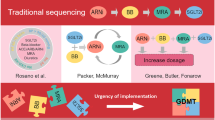Abstract
Studies have concluded that telephone-based management of warfarin is an effective alternative to in-office management. High rates of patient and physician satisfaction have been reported with telephone-based monitoring. Proposed benefits of telephone-based monitoring include time- and cost savings for patients and healthcare providers alike as well as increased access to care for those patients who have difficulty making in-office appointments. This study aimed to evaluate the impact of telephone versus office-based management of warfarin on extreme INR values. A retrospective cohort study was conducted to assess outcomes of patients receiving warfarin managed either by telephone or in-office appointments. The primary endpoint of the study was the frequency of extreme INR values, defined as an INR ≤1.5 or ≥4.5. A total of 110 patients were evaluated; subjects were distributed 2:1 between the in-office and telephone groups. Baseline characteristics were similar between groups. Subjects followed via telephone had a twofold increase in the incidence of extreme INR values compared to the patients followed in-office (15.18 vs. 7.98 %; p < 0.0001). Overall TTR was similar between groups (85.39 vs. 80.38 %, p = 0.1171). There was no difference between the two groups in the incidence of major bleeding events (2.67 vs. 0 %, p = 1.00), thromboembolic events (8 vs. 0 %, p = 0.1740), or hospitalizations related to anticoagulation therapy (6.67 vs. 0 %, p = 0.1758). Patients monitored via telephone had a higher incidence of extreme INR values than patients followed in-office, which may lead to an increased incidence of adverse outcomes in the long-term. Well-designed, prospective studies are needed to confirm such findings.

Similar content being viewed by others

References
Nutescu EA, Shapiro NL, Ibrahim S, West P. Warfarin and its interactions with foods, herbs and other dietary supplements. Expert Opin Drug Saf. 2006;5(3):433–51.
Pirmohamed M. Warfarin: almost 60 years old and still causing problems. Br J Clin Pharmacol. 2006;62(5):509–11.
Waterman AD, Milligan PE, Banet GA, Gatchel SK, Gage BF. Establishing and running an effective telephone-based anticoagulation service. J Vasc Nurs. 2001;19(4):126–34.
Kimmel SE. Warfarin therapy: in need of improvement after all these years. Expert Opin Pharmacother. 2008;9(5):677–86.
Guyatt GH, Akl EA, Crowther M, Gutterman DD, Schuünemann HJ. Executive summary: antithrombotic therapy and prevention of thrombosis, 9th ed: American College of Chest Physicians Evidence-Based Clinical Practice Guidelines. Chest. 2012;141(Suppl 2):7S–47S.
Chiquette E, Amato MG, Bussey HI. Comparison of an anticoagulation clinic with usual medical care: anticoagulation control, patients outcomes, and health care costs. Arch Intern Med. 1998;158:1641–7.
Garabedian-Ruffalo SM, Gray DR, Sax MJ, Ruffalo RL. Retrospective evaluation of a pharmacist-managed warfarin anticoagulation clinic. Am J Hosp Pharm. 1985;42(2):304–8.
Gray DR, Garabedian-Ruffalo SM, Chretien SD. Cost-justification of a clinical pharmacist-managed anticoagulation clinic. Drug Intell Clin Pharm. 1985;19:575–80.
Wittkowsky A, Nutescu EA, Blackburn J, Mullins J, Hardman J, Mitchell J, et al. Outcomes of oral anticoagulant therapy managed by telephone vs in-office visits in an anticoagulation clinic settings. Chest. 2006;130(5):1385–9.
Goldberg Y, Meytes D, Shabtai E, Shinron O, Shainberg B, Seligsohn U, et al. Monitoring oral anticoagulant therapy by telephone communication. Blood Coagul Fibrinolysis. 2005;16:227–30.
Schulman S, Parpia S, Stewart C, Rudd-Scott L, Julian JA, Levine M. Warfarin dose assessment every 4 weeks versus every 12 weeks in patients with stable international normalized ratios: a randomized trial. Ann Intern Med. 2011;155(10):653–9.
Martin LR, Williams SL, Haskard KB, DiMatteo MR. The challenge of patient adherence. Ther Clin Risk Manag. 2005;1(3):189–99.
Ho PM, Bryson CL, Rumsfeld JS. Medication adherence: its importance in cardiovascular outcomes. Circulation. 2009;119:3028–35.
Conflict of interest
The authors have no conflict of interest to report.
Author information
Authors and Affiliations
Corresponding author
About this article
Cite this article
Stoudenmire, L.G., DeRemer, C.E. & Elewa, H. Telephone versus office-based management of warfarin: impact on international normalized ratios and outcomes. Int J Hematol 100, 119–124 (2014). https://doi.org/10.1007/s12185-014-1619-6
Received:
Revised:
Accepted:
Published:
Issue Date:
DOI: https://doi.org/10.1007/s12185-014-1619-6



